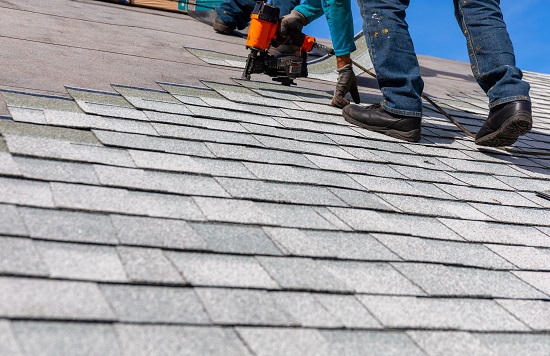Highlights:
Inspect your roof every spring and fall to catch minor issues before they turn into costly repairs.
Watch for warning signs like missing shingles, sagging areas, moss, or granules in gutters that indicate roof problems.
Perform seasonal maintenance to prepare your roof for changing weather and prevent damage year-round.
Handle basic tasks like gutter cleaning yourself, but leave major repairs and inspections to the professionals.
Choose roofing contractors based on credentials, references, and warranties—not just the lowest price.
Select roofing materials that balance durability, energy efficiency, and style to best suit your home and climate.
Most homeowners underestimate how much their roof needs care until a leak shows up. Ignoring roof maintenance can lead to costly repairs and stress you don’t want. This guide breaks down what you need to know about roofing services, roof installation, and the best roofing tips to keep your home safe. Read on to find simple steps and expert advice that make roof care manageable and effective.
Understanding Roof Maintenance
Your roof is your home’s first line of defense against the elements. Let’s explore why regular care matters and how to spot issues before they become major headaches.
Importance of Regular Inspections
Did you know that most roof problems start small? That’s why regular checks are so crucial. By looking at your roof twice a year, you can catch minor issues before they turn into big, expensive problems.
According to Qualis, spring and fall are ideal times for these inspections. In spring, you can spot any damage from winter storms. Fall checks help you prepare for the harsh weather ahead. During these inspections, look for loose or missing shingles, cracks, or any signs of wear and tear.
Don’t forget about your attic! Check for water stains, mold, or daylight coming through the roof boards. These are all red flags that your roof might need attention.
Remember, catching problems early can save you thousands in repairs down the road. It’s not just about avoiding leaks – a well-maintained roof also keeps your energy bills lower and your home more comfortable.
Identifying Common Roof Problems
According to the Third Estimate, knowing what to look for can make all the difference in roof care. Here are some common issues you might spot during your inspections:
- Shingle damage: Look for curling, cracking, or missing shingles. These can let water seep in, causing leaks and rot.
- Flashing problems: Check the metal strips around chimneys, vents, and skylights. If they’re loose or damaged, water can get in.
- Sagging areas: A dip in your roofline could mean there’s water damage or structural issues underneath.
- Granules in the gutters: If you find a lot of sandy granules from your shingles in the gutters, it’s a sign your roof is wearing out.
- Moss or algae growth: While often just a cosmetic issue, heavy growth can trap moisture and damage your shingles over time.
By familiarizing yourself with these common problems, you’ll be better equipped to spot issues early. Remember, when in doubt, it’s always best to call in a pro for a closer look.
Essential Roof Maintenance Tips
Now that you know what to look for, let’s talk about how to keep your roof in top shape year-round. These tips will help you protect your investment and avoid surprises.
Seasonal Roof Care
Each season brings its own challenges for your roof. Here’s a quick guide to keep you on track:
Spring:
- Clear debris from gutters and downspouts
- Trim overhanging branches
- Check for winter damage
Summer:
- Look for sun damage or cracked shingles
- Ensure proper attic ventilation to prevent heat buildup
- Clean algae or moss growth
Fall:
- Remove leaves and debris
- Check for loose or damaged shingles before winter
- Make sure gutters are clear for winter snow and ice
Winter:
- Remove snow buildup after heavy storms
- Check for ice dams forming at the roof’s edge
- Look for icicles – they can signal poor insulation
By following this seasonal checklist, you’ll catch most issues before they become serious. Remember, a little effort each season can save you big in the long run.
DIY Maintenance vs. Professional Help
While some roof care tasks are perfect for DIY, others require expert hands. Let’s break it down:
DIY tasks you can handle:
- Visual inspections from the ground or a ladder’s base
- Cleaning gutters and downspouts
- Trimming nearby trees
- Checking your attic for leaks or insulation issues
When to call the pros:
- For any work that requires walking on the roof
- If you spot major damage or leaks
- For annual professional inspections
- When it’s time for repairs or replacements
Safety should always come first. If you’re not comfortable with heights or lack the right equipment, it’s best to leave roof work to the experts. Professional roofers have the tools and know-how to handle complex issues safely and effectively.
Remember, trying to tackle major roof problems on your own can often lead to more damage – and higher repair costs down the line. When in doubt, reach out to a trusted roofing service for advice.
Choosing Roofing Services Wisely
When it’s time to bring in the pros, knowing how to pick the right roofing service is key. Let’s explore what questions to ask and how to evaluate your options.
Questions to Ask Roofers
Choosing the right roofing professional can make all the difference. Here are some key questions to ask:
- Are you licensed and insured? This protects you if accidents happen on your property.
- Can you provide local references? Talking to past customers gives you real insight into their work.
- What warranties do you offer? Understanding what’s covered – and for how long – is crucial.
- How long will the project take? Get a clear timeline to plan around the work.
- How do you handle unexpected issues? Knowing their problem-solving approach is important.
Don’t be shy about asking these questions. A reputable roofer will be happy to answer them all. Their responses can tell you a lot about their professionalism and expertise.
Remember, the lowest bid isn’t always the best choice. Look for a balance of fair pricing, quality materials, and solid warranties. A good roofer will explain their quote in detail, helping you understand the value you’re getting.
Evaluating Roof Installation Options
When it’s time for a new roof, you’ve got choices to make. Here’s what to consider:
Materials: Asphalt shingles are popular and cost-effective, but metal, tile, or slate can offer longer life and unique looks. Think about your climate, budget, and home’s style when choosing.
Energy efficiency: Some roofing materials can help lower your energy bills. Look for Energy Star-rated options if this is a priority for you.
Color and style: Your roof makes up a big part of your home’s curb appeal. Choose a color and style that complements your house and neighborhood.
Longevity: How long do you plan to stay in your home? If it’s for the long haul, investing in more durable materials might make sense.
Installation method: Some newer systems offer better protection or easier repairs. Ask your roofer about the latest techniques.
By weighing these factors, you can choose a roof that not only protects your home but also adds to its value and appearance. Don’t rush this decision – take the time to explore your options and find the best fit for your needs and budget.
Taking care of your roof doesn’t have to be overwhelming. By staying on top of regular inspections, tackling simple maintenance tasks, and knowing when to call in the pros, you can keep your roof in great shape for years to come. Remember, your roof is a big investment – treating it right will pay off in the long run with fewer repairs, lower energy costs, and peace of mind.
By following the advice in this guide and staying proactive about your roof’s care, you’re setting yourself up for success. Your home will stay protected, comfortable, and looking great for years to come.









